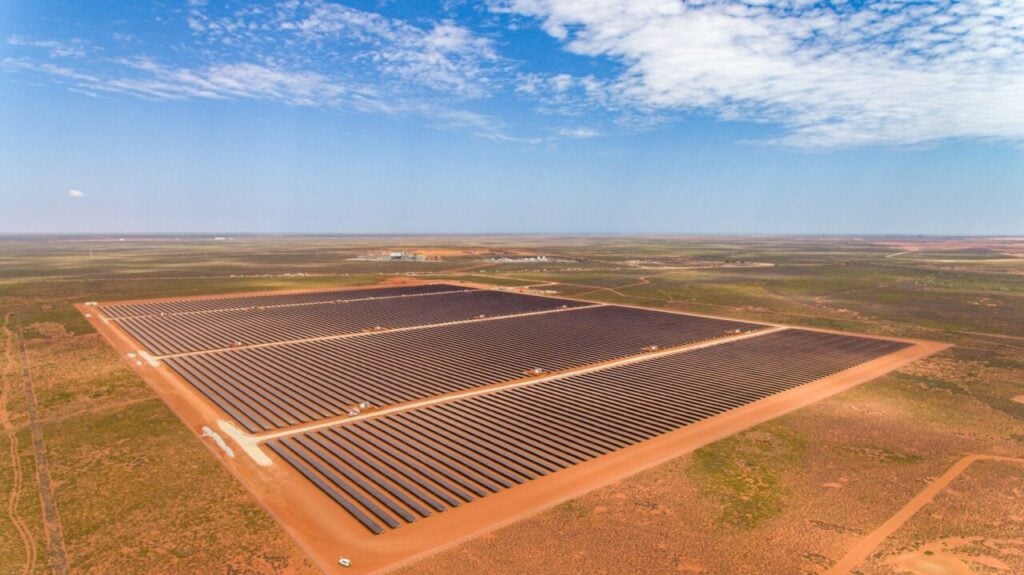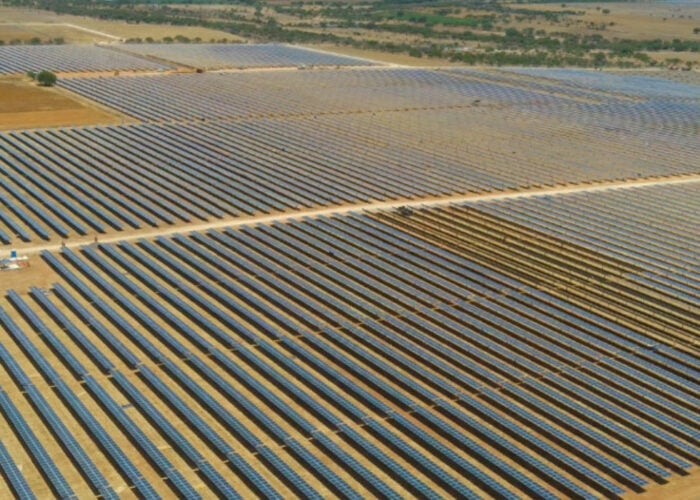
Australian energy company APA Group has completed the construction of a 45MW solar-plus-storage project in the Pilbara region of Western Australia.
The project, which features a 35MW/36.7MWh co-located battery energy storage system (BESS), will provide power to mining company BHP for its iron ore port facilities. The Monford Group, an Australian construction company, and the Shanghai Electric Company were both involved in the project’s construction.
Try Premium for just $1
- Full premium access for the first month at only $1
- Converts to an annual rate after 30 days unless cancelled
- Cancel anytime during the trial period
Premium Benefits
- Expert industry analysis and interviews
- Digital access to PV Tech Power journal
- Exclusive event discounts
Or get the full Premium subscription right away
Or continue reading this article for free
APA Group’s solar PV project, the Port Hedland Solar and Battery Project, has been uniquely designed to combat the region’s geographical challenges. The solar PV plant can withstand sustained wind speeds of 80m/s or 288km/hr, something AGA claims is a first in the Australian market.
The solar PV power plant is located in a coastal region, and with Western Australia sometimes susceptible to cyclone conditions, the plant has been designed to withstand these extreme weather conditions.
It is worth noting that the project was initially developed by Australian utility Alinta, which signed a power purchase agreement (PPA) to sell power generated at the project to Australian mining giant BHP, and selected CIMIC Group subsidiary UGL to design, test and commission the BESS at the project in 2023.
APA Group acquired Alinta in 2023 and has continued development at the project, which, if it is as productive as the developers expect, will power the daytime operations of BHP’s processing and exporting facilities at Port Hedland on the north coast of Australia.
APA CEO and managing director Adam Watson said the project delivery demonstrates the ongoing execution of APA’s Pilbara growth strategy in partnership with key resource customers.
“To achieve our nation’s emissions reduction ambition, it is essential that we have a plan for decarbonisation across the resources sector. This project demonstrates how solar, battery and gas-powered generation can be sewn together to successfully transition remote mining operations,” Watson said.
“Decarbonising the energy intensive and remote operations of Australia’s leading mining and resources companies will be a major undertaking. The investment required to decarbonise Western Australia’s minerals-rich Pilbara region alone is estimated to be about AU$15 billion (US$9.65 billion) and we have a strong AU$3 billion plus pipeline of growth projects that we continue to progress.”
Port Hedland is one of the busiest ports in the global iron sector, with around 48.5 million tonnes of iron ore leaving for China alone in June of this year, a 6.28% increase over June of the previous year.






